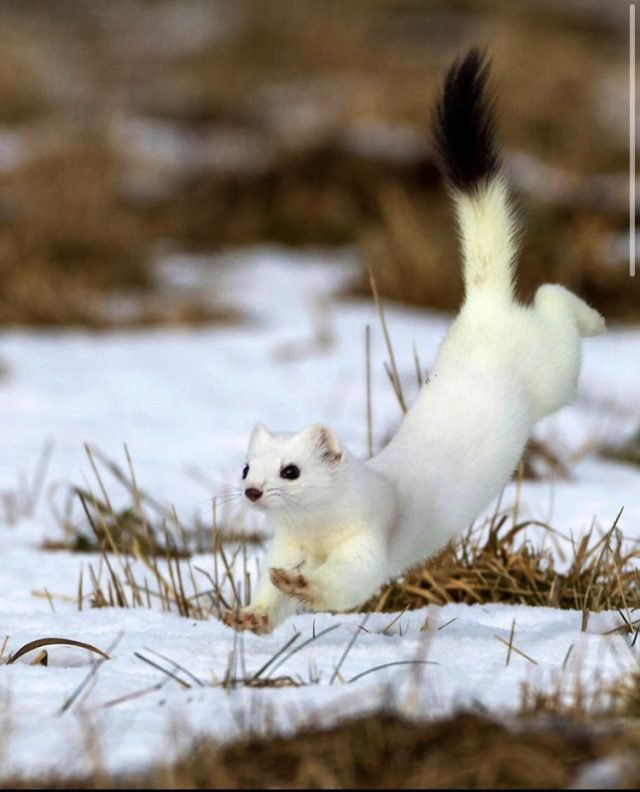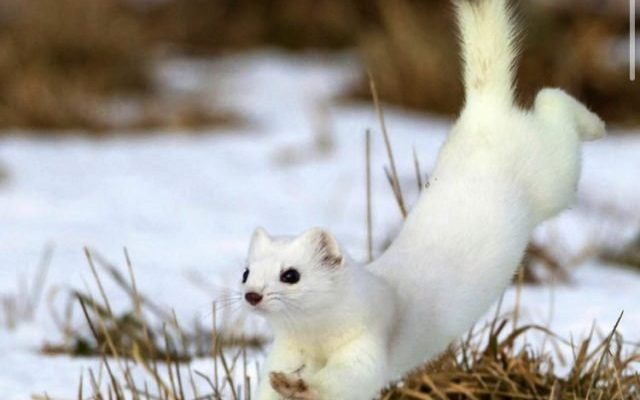
Stoats, also known as short-tailed weasels, are often found in forests, grasslands, and even on the edges of farmlands. While they’re generally harmless to humans, knowing how to react can make your encounter more enjoyable and safe. Let me explain what a stoat is, why it’s unique, and how to handle an encounter with one in the wild.
Understanding the Stoat: What Is It?
The stoat (Mustela erminea) belongs to the weasel family and is easily recognized by its slender body and short legs. Think of it as nature’s little magician—quick and elusive. Stoats are typically brown in summer, but when the cold weather hits, they transform into a stunning white coat. This seasonal change helps them blend into snowy landscapes, making them savvy survivors in their habitats.
These creatures are not just about looks; they’re also fascinating hunters. Stoats primarily feast on small animals like rabbits, rodents, and birds. Their speed and agility make them excellent predators. Picture a small, furry gymnast darting around, quickly pivoting to catch its next meal. This is nature’s way of keeping the balance in the ecosystem.
You might be wondering how to distinguish a stoat from other similar animals like the ferret or the marten. The main difference is the stoat’s characteristic black-tipped tail and its smaller size compared to a ferret. So, if you spot a tiny creature with a dash of flair at the end of its tail, you’re likely looking at a stoat!
First Reactions: Stay Calm and Observe
Encountering a stoat in the wild can be a bit surprising, but staying calm is key. Here’s the thing: these little guys are naturally curious but also quite shy. If you see one, take a moment to appreciate the sight rather than panicking. A stoat will often freeze when it senses danger, which gives you a chance to observe it without causing stress.
Make sure to keep your distance. Stoats are more afraid of you than you might think. Taking a step back and allowing them space to move can lead to a more exciting observation. If you stand still, you might even witness some unique behaviors, like playful hopping and quick turns.
Want a tip? If you have a camera handy, use it! Stoats can be tricky to photograph since they move so quickly, but capturing one in action makes for a fantastic memory. Just ensure you’re at a safe distance and using your zoom function. Remember, it’s all about enjoying the moment without intruding on their space.
Understanding Stoat Behavior: What to Expect
Stoats are absolutely fascinating in their behavior, and understanding this can enhance your encounter. These creatures display a range of quirky traits that make them unique in the animal kingdom. For instance, they have an incredible hunting instinct. A stoat can take on prey much larger than itself, showcasing its bold personality.
You might notice a stoat darting in and out of bushes or rocks. This is part of their hunting strategy and playfulness. They often give chase to small animals, which can be quite a sight to see. However, if you see a stoat engaging in this behavior, it’s best to simply watch and not intervene. Nature has its way of balancing itself, and each creature plays a role.
During mating season, you might also observe male stoats performing courtship displays. They become more vocal and active, and you may even witness some playful sparring between males trying to impress potential mates. It’s nature’s own version of a dance-off!
What to Avoid: Don’t Approach or Disturb
While the idea of getting close to a stoat might sound appealing, it’s crucial to remember that these animals are wild and not pets. Approaching them can cause stress and lead to dangerous situations for both you and the stoat. Here’s a simple rule: never try to touch or corner a stoat.
If you’re on a hiking trail and spot a stoat, resist the urge to walk towards it. Instead, back away slowly. Creating distance allows the stoat to feel secure and go about its business. Most importantly, don’t try to feed it. Human food can be harmful to wild animals, and feeding them can lead to dependency.
Stoats are also protected species in some areas, so disturbing them or their habitat may be illegal. Taking a step back and letting nature play out is the best way to respect these fascinating creatures.
Wildlife Interactions: When to Seek Help
In rare situations, you may encounter a stoat that seems injured or sick. If it’s behaving unusually—like stumbling or not responding to stimuli—this might be a sign something’s wrong. Here’s the thing: when dealing with wild animals, it’s important to exercise caution.
If you believe a stoat is in distress, avoid trying to handle it yourself. Instead, contact local wildlife authorities or animal control for assistance. They have the training and tools needed to safely assess and help the animal.
It’s a good practice to keep your distance and observe from afar. If the stoat appears healthy, enjoy watching it from a safe vantage point. Understanding how to respond to wildlife encounters ensures both your safety and the well-being of the animals.
The Magic of Observation: Enjoying Nature Responsibly
Just think about how exciting it is to see a wild stoat! But with that excitement comes the responsibility to observe nature respectfully. Enjoying wildlife doesn’t mean intruding on their lives. Instead, it’s all about appreciation and learning.
When you encounter a stoat, take the time to pause and soak in the moment. Watch its behaviors, listen to the sounds around it, and appreciate the beauty of the natural world. Engaging with wildlife responsibly creates a deeper connection to nature and fosters a greater respect for all its inhabitants.
If you want to amplify this experience, consider going on guided nature walks or joining local wildlife conservation groups. These opportunities can provide more in-depth knowledge and skills for observing wildlife safely.
Encountering a stoat in the wild can be a delightful experience, offering a glimpse into the life of one of nature’s most agile creatures. By staying calm and observing from a distance, you can enjoy the magic of this encounter without causing harm to the animal or yourself.
Remember, taking care of our wildlife and respecting their space is crucial. Every encounter is a chance to learn and appreciate the beauty around us. So, next time you’re out exploring, keep an eye out for these fascinating little mammals. You never know when you might find yourself in the presence of a stoat, adding a sprinkle of adventure to your outdoor journey!

